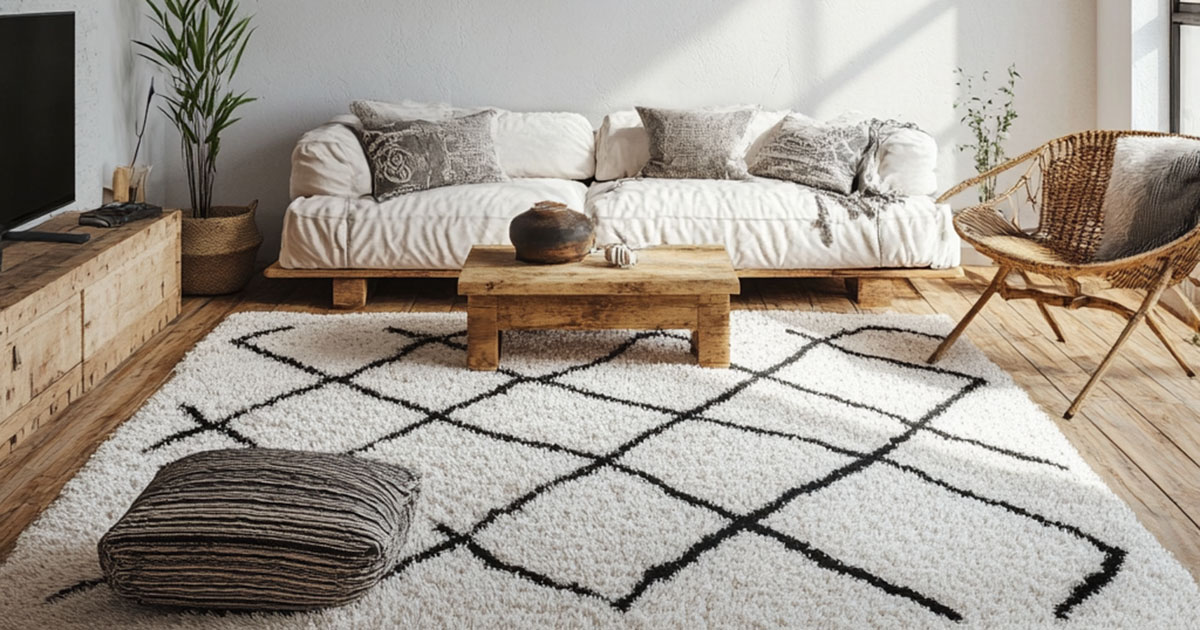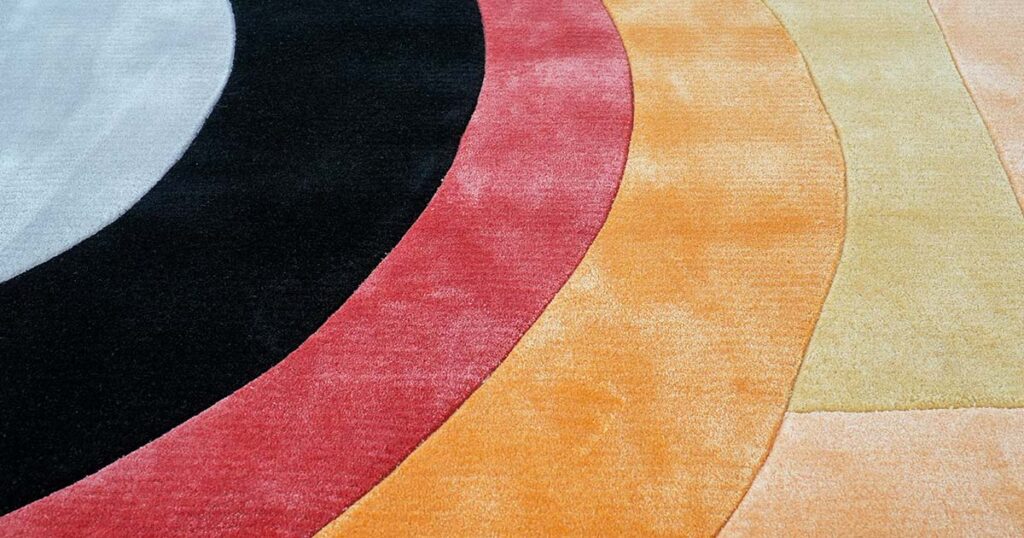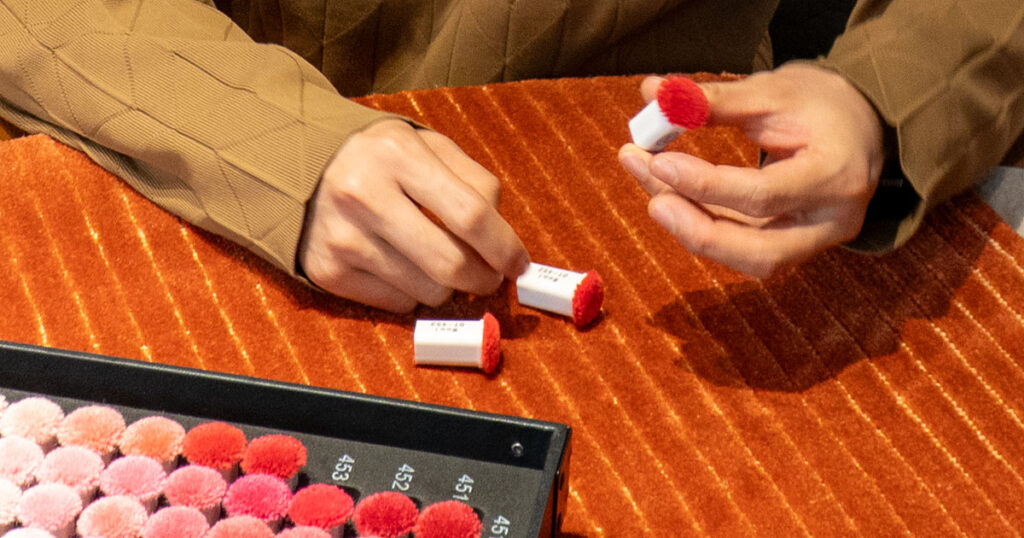Discover the timeless elegance of Scandinavian-inspired rug designs in this comprehensive guide.
We’ll explore the key characteristics that make these rugs stand out.
You’ll learn about their history, popular patterns, and how to incorporate them into your home decor.
We’ll also cover practical tips for choosing and maintaining these stylish floor coverings.
Ready to transform your space with Nordic charm?
Let’s dive in!
Introduction
Scandinavian-inspired rug designs have gained immense popularity in recent years, offering a perfect blend of simplicity, functionality, and aesthetic appeal.
For beginning buyers, understanding the key elements of these rugs can help in making informed decisions when selecting the perfect piece for their homes.
This guide aims to provide a comprehensive overview of Scandinavian rug designs, their characteristics, and how to incorporate them into your living spaces.
What are Scandinavian-Inspired Rug Designs?
Scandinavian-inspired rug designs are decorative floor coverings that embody the principles of Nordic interior aesthetics. These rugs typically feature:
- Clean lines and minimalist patterns
- Neutral color palettes with occasional pops of muted colors
- Natural materials like wool, cotton, and jute
- Functional yet stylish designs
Scandinavian rugs draw inspiration from the region’s natural landscapes, cultural heritage, and design philosophy that emphasizes simplicity, functionality, and beauty.
They are characterized by their ability to create a sense of warmth and coziness (hygge) while maintaining a clean, uncluttered look.
The History and Origins of Scandinavian Rug Design
Scandinavian rug design has a rich history dating back to the 15th century:
- Early beginnings: The oldest traditional Scandinavian rug is the Rya, which started as a coarse, long-piled heavy coverlet used by fishermen for protection against harsh weather.
- Evolution: By the 18th century, Rya rugs became part of a woman’s trousseau, signifying their value and status.
- Modern era: The break of the 19th and 20th centuries marked the beginning of the Rollakan era, characterized by flat-woven rugs with pastel colors and geometric designs.
- Mid-20th century boom: Scandinavian rug design reached its pinnacle in the 1950s, aligning perfectly with the Mid-Century Modern aesthetic.
- Contemporary influence: Today, Scandinavian-inspired rugs continue to be popular, blending traditional techniques with modern design sensibilities.
Why Scandinavian-Inspired Rugs are a Popular Choice
Scandinavian-inspired rugs have gained widespread popularity for several reasons:
- Versatility: These rugs complement various interior design styles, from minimalist to eclectic.
- Functionality: Scandinavian design prioritizes practicality without sacrificing aesthetics.
- Timeless appeal: The clean lines and neutral colors of these rugs ensure they remain stylish for years to come.
- Comfort: The use of natural materials and soft textures creates a cozy, inviting atmosphere.
- Sustainability: Many Scandinavian-inspired rugs are made from eco-friendly materials, appealing to environmentally conscious consumers.
Materials Commonly Used in Scandinavian Rug Making
Scandinavian-inspired rugs often utilize natural, high-quality materials:
- Wool: The most common material, prized for its durability, warmth, and natural stain resistance.
- Cotton: Offers a softer feel and is often used in flat-weave rugs.
- Jute and Sisal: These plant-based fibers provide texture and a natural, earthy look.
- Synthetic blends: Some modern Scandinavian-inspired rugs incorporate synthetic fibers for added durability and easy maintenance.
When choosing a rug, consider factors like foot traffic, maintenance requirements, and personal preferences for texture and appearance.
Typical Colors and Patterns Found in Scandinavian Rugs
Scandinavian-inspired rugs often feature:
- Neutral base colors: Whites, greys, beiges, and soft blacks form the foundation of many designs.
- Accent colors: Muted pastels, earthy tones, or occasional bold hues add visual interest.
- Geometric patterns: Simple shapes like triangles, circles, and lines are common.
- Abstract designs: Inspired by nature or modern art movements.
- Minimalist motifs: Subtle patterns that don’t overwhelm the overall design.
When selecting a rug, consider how its colors and patterns will complement your existing decor and contribute to the overall atmosphere of the room.
Comparing Scandinavian Rugs with Other Popular Rug Styles
To better understand Scandinavian-inspired rugs, let’s compare them to other popular styles:
Scandinavian vs. Persian/Oriental rugs:
- Scandinavian: Simpler patterns, neutral colors, modern aesthetic
- Persian/Oriental: Intricate patterns, rich colors, traditional designs
Scandinavian vs. Contemporary rugs:
- Scandinavian: Natural materials, subtle patterns, focus on functionality
- Contemporary: Various materials, bold patterns, emphasis on artistic expression
Scandinavian vs. Bohemian rugs:
- Scandinavian: Minimalist, neutral palette, geometric designs
- Bohemian: Eclectic, vibrant colors, organic patterns
Understanding these differences can help you choose the rug style that best suits your personal taste and interior design goals.
How to Choose the Right Scandinavian Rug for Your Space
Selecting the perfect Scandinavian-inspired rug involves considering several factors:
- Size and shape: Measure your space and consider furniture placement. Common shapes include rectangular, round, and runner rugs.
- Color scheme: Choose a rug that complements your existing decor. Neutral tones are versatile, while subtle pops of color can add interest.
- Texture: Consider the pile height and material based on the room’s function and your personal preferences.
- Pattern: Select a design that enhances your space without overwhelming it. Geometric or subtle patterns work well in Scandinavian-inspired interiors.
- Functionality: Consider factors like ease of cleaning, durability, and suitability for high-traffic areas.
- Budget: Determine your price range and look for options that offer the best quality within your budget.
Remember to take your time and explore various options before making a decision.
Tips for Styling and Decorating with Scandinavian Rugs
Incorporate Scandinavian-inspired rugs into your decor with these styling tips:
- Layer rugs: Combine different textures and sizes for added visual interest.
- Create contrast: Use a light-colored rug on dark flooring or vice versa to define spaces.
- Complement existing furniture: Choose a rug that harmonizes with your furniture’s style and color palette.
- Use rugs to define areas: In open-plan spaces, use rugs to delineate different functional zones.
- Incorporate natural elements: Pair your rug with wooden furniture or plants to enhance the Scandinavian aesthetic.
- Balance minimalism and coziness: Add soft textiles like throw pillows or blankets to create a warm, inviting atmosphere.
Caring for and Maintaining Scandinavian Rugs
Proper care ensures your Scandinavian-inspired rug remains beautiful for years:
- Regular vacuuming: Vacuum at least once a week to remove dirt and debris.
- Rotate periodically: Turn your rug 180 degrees every few months to ensure even wear.
- Address spills immediately: Blot (don’t rub) spills with a clean, damp cloth.
- Professional cleaning: Have your rug professionally cleaned every 12-18 months.
- Use rug pads: Protect your rug and floor with a non-slip rug pad.
- Avoid direct sunlight: Prolonged exposure can cause fading. Use window treatments to protect your rug.
Where to Shop for High-Quality Scandinavian Rugs
Find authentic Scandinavian-inspired rugs through various channels:
- Specialized online retailers: Websites focusing on Scandinavian design often offer a curated selection of high-quality rugs.
- Home decor stores: Many brick-and-mortar stores now carry Scandinavian-inspired rug collections.
- Direct from designers: Some Scandinavian designers sell their rug collections directly to consumers.
- Vintage and antique shops: For authentic mid-century Scandinavian rugs.
- Handmade marketplaces: Platforms like Etsy offer unique, handcrafted Scandinavian-inspired rugs.
When shopping, look for reputable sellers with positive customer reviews and clear return policies.
Scandinavian Rug Buying Tips for Beginners
As a beginning buyer, keep these tips in mind:
- Set a budget: Determine how much you’re willing to spend before starting your search.
- Research materials: Understand the pros and cons of different rug materials to make an informed decision.
- Request samples: If possible, obtain fabric swatches or small samples to see how the rug looks in your space.
- Read reviews: Look for feedback from other buyers to gauge quality and customer satisfaction.
- Check authenticity: If purchasing a vintage or designer rug, verify its authenticity and provenance.
- Consider maintenance: Factor in the long-term care requirements when making your decision.
- Take your time: Don’t rush the process. Finding the perfect rug may take some time, but it’s worth the effort.
Conclusion
Scandinavian-inspired rug designs offer a timeless and versatile option for home decor.
By understanding their history, characteristics, and styling principles, beginning buyers can confidently select and incorporate these rugs into their living spaces.
Whether you opt for a minimalist geometric pattern or a cozy shag texture, a Scandinavian-inspired rug can add warmth, style, and functionality to any room.
Remember to consider factors such as material, size, and maintenance when making your selection, and don’t be afraid to experiment with different styles to find the perfect rug that complements your home’s aesthetic.




